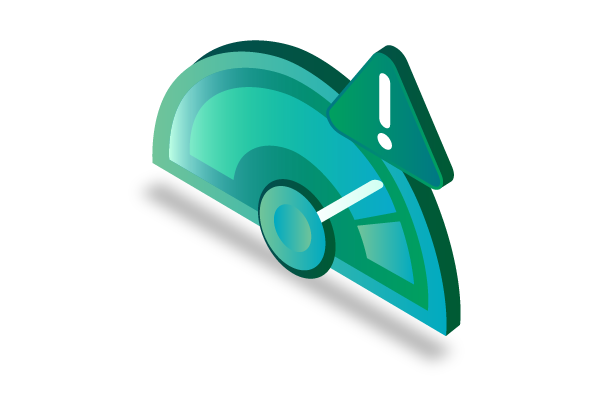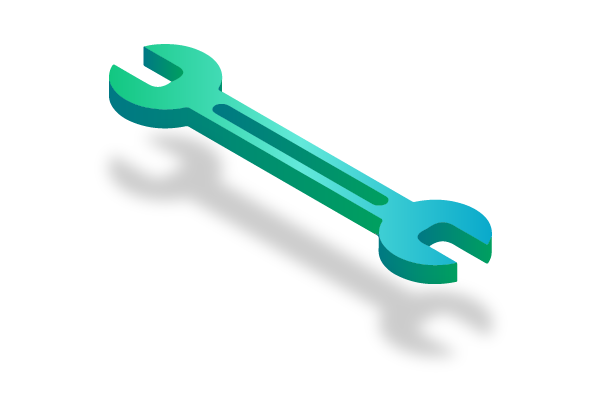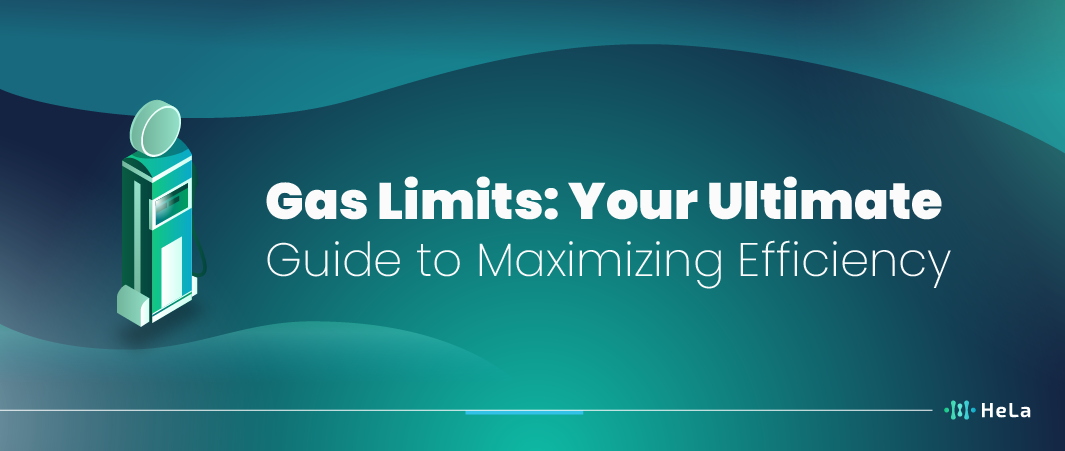In the realm of blockchain and cryptocurrencies, terms like “gas limit” often come up, especially in the context of Ethereum-based transactions. While the name might evoke images of fuel caps or car gauges, in blockchain lingo, it serves a distinct purpose. If you’ve ever wondered what this term means or how it affects the ecosystem, you’re not alone. This guide will delve into the intricacies of the gas limit, shedding light on its role, how it operates, and its broader implications for users.
The concept of “gas” in the Ethereum network is crucial for the functioning and security of its platform. Gas ensures that transactions and contracts are executed efficiently and prevents any malicious activities or infinite loop exploitation in the network. As an integral part of this mechanism, the gas limit plays a pivotal role in determining the scope and potential of any operation within the blockchain.
For both developers writing decentralized applications (dApps) and regular users transacting on the network, understanding the gas limit can be a game-changer. Not only does it affect transaction speeds and costs, but it also provides insights into the inner workings of Ethereum’s computational approach. So, without further ado, let’s dive into the world of gas limits.
What is the Gas Limit?

The gas limit, simply put, is the maximum amount of gas that a sender is willing to consume in a transaction or smart contract execution on the Ethereum network. Think of it as a budget for your transaction. Just like you allocate a certain amount of money for a task, you set aside a specific gas limit for your transactions in Ethereum.
Also Read: 7 Best Defi Wallets to Consider in 2023
Each operation, whether sending Ether or executing a function in a smart contract, requires a certain amount of computational work. This work is quantified in units of gas. The gas limit ensures that the transaction doesn’t exceed the allotted “budget”, thereby preventing unnecessary spending or potential hang-ups in the network.
Why is the Gas Limit Important?

The Gas Limit is a crucial concept within the Ethereum blockchain ecosystem, playing a pivotal role in the network’s functionality and security. To provide a more comprehensive understanding, let’s delve deeper into why the Gas Limit is so important.
In Ethereum, every transaction and smart contract execution requires a certain amount of computational resources to be processed. These resources include CPU cycles, memory, and storage, among others. To ensure that the network remains stable and resistant to spam attacks, Ethereum employs a fee mechanism called “Gas.” Users must pay for the computational resources they consume by attaching a specific amount of Gas to their transactions and smart contracts.
The Gas Limit comes into play as it defines the maximum amount of Gas that can be consumed in a single block. Miners, who validate and add transactions to the blockchain, are incentivized by Gas fees. They are motivated to prioritize transactions with higher Gas fees because it directly increases their earnings. However, if a transaction or smart contract execution exceeds the Gas Limit set for a block, it will not be processed, potentially leading to network congestion or failure. Here are a few key reasons why the Gas Limit is important:
Ensuring Transaction Completion
To make sure your cryptocurrency transaction goes through without any hiccups, it’s crucial to set the right amount of “gas.” Think of gas as the fuel needed to power your transaction on the blockchain. If you don’t provide enough gas, your transaction might sputter and fail to complete. So, how can you ensure a smooth journey? Well, it’s like topping up your car with enough gas before a long road trip – you need to estimate the right amount.
Here’s the trick: set an appropriate gas limit. This limit determines the maximum amount of gas your transaction can use. If you set it too low, your transaction might stall before reaching its destination. But if you set it too high, you’ll overspend on fees. So, finding that sweet spot is crucial. A good rule of thumb is to look at recent transactions on the network to get an idea of what’s reasonable. With the right gas limit, your cryptocurrency transaction should sail through the blockchain smoothly and arrive at its intended location without a hitch.
Protection Against Infinite Loops
To prevent infinite loops in Ethereum’s smart contracts, certain measures are in place. Sometimes, smart contracts can be designed poorly or even maliciously, causing them to run forever and use up all the network’s computational resources. To stop this from happening, Ethereum sets a gas limit. Think of it as a sort of “budget” for executing smart contracts. This gas limit ensures that even if a contract goes haywire and starts an endless loop, it won’t deplete all the available resources on the network. It’s like putting a cap on how much energy a device can use to avoid a runaway electricity bill.
So, in simple terms, Ethereum’s gas limit acts as a safeguard against runaway contracts, making sure that the network stays balanced and that no single contract can hog all the resources. It’s like having a speed limit on the highway to prevent reckless drivers from causing chaos. This way, Ethereum keeps things fair and running smoothly for everyone using the platform.
Determining Transaction Speed
Increasing the gas limit can help speed up your transactions. Here’s why: Miners are like the busy workers in the cryptocurrency world who check and add transactions to the digital ledger called the blockchain. They often choose transactions with higher gas limits because they come with the promise of better rewards. It’s a bit like a delivery driver picking up bigger tips for delivering packages faster.
So, when you set a higher gas limit for your transaction, you’re essentially offering a sweeter deal to the miners. This motivates them to process your transaction sooner, resulting in quicker confirmations. It’s a win-win situation – you get your transaction done faster, and the miners get a better incentive for their work in securing the blockchain.
Controlling Expenditure
Setting the right gas limit is like managing your budget for gas while driving. Think of it as setting a limit on how much you’re willing to spend on transaction fees when using a blockchain network. If you set it too high, you might end up overpaying for fees even if you don’t use all that gas. On the other hand, setting it too low could lead to your transactions running out of gas and not getting completed. So, it’s essential to find that sweet spot – not too high and not too low – to control your spending effectively.
Imagine it as filling up your car’s gas tank just enough to reach your destination, not more, not less. You want to make sure your transactions get processed without wasting your hard-earned cryptocurrency on unnecessary fees. So, finding that appropriate gas limit is a smart move to keep your spending in check while making sure your blockchain transactions run smoothly.
Setting the Right Gas Limit

Knowing how crucial the gas limit is, it’s essential to set it appropriately. But how do you determine the right amount? Here are some factors to consider:
Type of Transaction
When you’re sending regular Ether (that’s the cryptocurrency used on the Ethereum network) from one wallet to another, it usually comes with a standard gas limit of 21,000. Think of gas as the fee you pay to process transactions on the Ethereum network. This standard limit is like the default setting for simple transactions, and it covers the basic cost of getting your Ether from point A to point B.
However, if you’re doing something more complex, like engaging with a smart contract, you might need to increase the gas limit. Smart contracts are like self-executing agreements on the Ethereum blockchain, and they can involve more computation and steps than a simple Ether transfer. So, in those cases, you’ll want to raise the gas limit to make sure your transaction gets processed smoothly. Just remember, it’s like putting a bit more fuel in the tank for your Ethereum transaction to handle the extra work.
Network Congestion
When lots of people are using the internet all at once, things can get a bit crowded, like a busy highway. In such times, it’s important to make sure your online transactions, like sending cryptocurrency or interacting with a blockchain, don’t get stuck in traffic. To do that, you might need to give your transaction a little extra “oomph” by increasing something called the “gas limit.” Think of it as adding more fuel to your car to make sure it gets to its destination faster.
You see, miners, the folks who process these transactions, prioritize the ones with higher gas limits because they want to earn more rewards. So, if you’re in a hurry to get your transaction through, increasing the gas limit can help you cut through the digital traffic and reach your destination quicker. Just like choosing a faster lane on the highway during rush hour, increasing the gas limit during times of network congestion can help ensure your online actions don’t get stuck in the slow lane.
Trial and Error
When it comes to dealing with intricate contracts on Ethereum, developers usually follow a process known as trial and error. They start by testing out the functions of these contracts on Ethereum’s test networks before taking them live on the main Ethereum network.
This testing helps them figure out the right gas limit, which is essentially the amount of computational power needed to perform these functions. By doing this on a test network, they can avoid unexpected surprises or excessive costs when they eventually deploy the contract on the real Ethereum network.
In simpler terms, think of it like test driving a car before buying it. Ethereum’s test networks act as a safe playground for developers to tinker with their smart contracts and make sure everything runs smoothly, all without the risk of spending too much gas. It’s like fine-tuning a recipe before serving it to guests, ensuring that the contract works as intended without any unnecessary expenses or complications.
Tools and Platforms
Several helpful tools and platforms, such as Etherscan and Metamask, offer recommendations for setting the gas limit when conducting transactions on blockchain networks like Ethereum. These recommendations are based on the current conditions of the network. Think of the gas limit as the amount of computational work your transaction requires, and gas is the fuel required to execute it.
These tools provide suggestions to help users strike a balance between ensuring their transactions get processed swiftly and minimizing transaction fees. For instance, during times of high network congestion, they might suggest a higher gas limit to prioritize transaction speed, while in calmer network conditions, a lower gas limit could suffice, keeping fees lower. By following these recommendations, users can navigate the complexities of blockchain transactions more easily and cost-effectively.
Implications of Incorrect Gas Limits
Setting the gas limit too low or too high can have repercussions in the context of blockchain and smart contract execution. Gas is a crucial concept in blockchain networks like Ethereum, where it represents the computational resources required to perform actions on the network. Here’s a more detailed explanation of the potential consequences:
Too Low
When you’re dealing with transactions on certain blockchain networks, there’s a common issue you should be aware of: running out of gas. Think of gas as the fuel needed to make transactions happen smoothly. Sometimes, if you don’t have enough gas in your tank, your transaction might fail. This can be a bit frustrating because not only does the transaction not go through, but you also lose the money you paid as a fee for trying to make it happen.
To put it simply, it’s like trying to drive your car without enough gas in the tank. You’ll start, but you won’t get very far, and you’ll end up wasting the money you spent on trying to go somewhere. So, remember to keep an eye on your gas levels when making transactions to avoid these hiccups and make sure your transactions go off without a hitch.
Also Read: Top 10 Stablecoins to Consider in 2023
Too High
When you’re making a cryptocurrency transaction, it’s important to keep in mind that even though you might get a refund for any unused gas, miners could see your transaction as one that’s willing to offer a higher fee. This means that they might prioritize processing your transaction over others, potentially resulting in slightly higher fees for you.
To put it simply, when you send a cryptocurrency transaction, miners are like the traffic controllers of the blockchain highway. They decide which transactions to process first, and they often favor those that offer a bit more in fees. So, while you’ll get your unused gas refunded, be prepared for the possibility of paying a tad more if you want your transaction to zoom through the blockchain faster. It’s all about supply and demand in the world of digital currencies!
Contract Execution
When it comes to smart contracts, think of them like self-executing agreements on the blockchain. But here’s the deal: for these contracts to work smoothly, they need something called “gas,” which is kind of like fuel. If they don’t get enough gas, it’s like a car running out of gas on the highway – things come to a halt. This can mess up how decentralized apps (dApps) operate and even mess with the transfer of tokens.
So, providing enough gas to these smart contracts is pretty important to keep everything moving smoothly in the world of blockchain. It’s like making sure your car has enough gas to get to your destination without any unexpected stops along the way.
Conclusion
The gas limit, while a technical aspect of the Ethereum network, has profound implications for both regular users and developers. It acts as a protective mechanism, ensuring that the network remains resilient against potential abuse while also allowing users to control their transaction’s fate.
Understanding the gas limit and setting it appropriately can lead to more efficient and cost-effective operations on the Ethereum blockchain. With the growth of decentralized platforms and the increasing number of transactions, being well-informed about such nuances becomes indispensable.
In conclusion, as the world of blockchain continues to evolve and expand, knowledge about concepts like the gas limit will empower users to navigate this space more confidently and proficiently. Whether you’re a developer looking to optimize smart contract executions or a regular user aiming for smooth transactions, grasping the essence of the gas limit is your key to a seamless Ethereum experience.
Disclaimer: The information provided by HeLa Labs in this article is intended for general informational purposes and does not reflect the company’s opinion. It is not intended as investment advice or recommendations. Readers are strongly advised to conduct their own thorough research and consult with a qualified financial advisor before making any financial decisions.

Joshua Soriano
I am a writer specializing in decentralized systems, digital assets, and Web3 innovation. I develop research-driven explainers, case studies, and thought leadership that connect blockchain infrastructure, smart contract design, and tokenization models to real-world outcomes.
My work focuses on translating complex technical concepts into clear, actionable narratives for builders, businesses, and investors, highlighting transparency, security, and operational efficiency. Each piece blends primary-source research, protocol documentation, and practitioner insights to surface what matters for adoption and risk reduction, helping teams make informed decisions with precise, accessible content.
- Joshua Soriano#molongui-disabled-link
- Joshua Soriano#molongui-disabled-link
- Joshua Soriano#molongui-disabled-link
- Joshua Soriano#molongui-disabled-link

